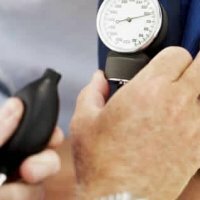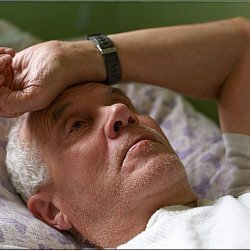Treatment of hypertensive crisis

In the treatment of patients with hypertensive crises, the expert faces two tasks: to quickly stop the development of the crisis, as it can lead to various dangerous complications and to prevent the occurrence of crises in the future.
At the moment there are many active agents that are able to lower the pressure in a few minutes after their use, but their use is often risky, so you need to know all their effects, properties and indications for use. There is another group of drugs that operate within half an hour after use.
The choice of the drug for this particular case and the way it is used depend on how quickly it is necessary to obtain a decrease in pressure and in what state the patient is, that is, his age, the presence of atherosclerosis, cerebral focal symptoms, heart failure, etc. In elderly patients, especially if they have a hypokinetic variety of hemodynamics, do not over-pressurize too quickly, as this may cause an ischemic disorder of any vital organ, such as the heart, brain, kidneys, and others.
The strategy of rapid reduction of pressure may be appropriate if hypertension is at an early stage, as well as in the case of a complicated version of the crisis in order to eliminate hypertensive encephalopathy, acute coronary or left ventricular failure, but even here it is necessary to lower the pressure very carefully, because the pressure drop is more thanA quarter can lead to severe disorders in the circulatory system of the brain or disruptions in the work of the heart muscle.
Treatment of crises of the first type
In the first type of crisis for its relief, dibazol is most commonly used, which is administered by the intravenous route. In the hyperkinetic version of the crisis and in elderly people, the drug lowers cardiac output by decreasing the return of venous blood. If the hypertensive disease is at a late stage and with the eu and hypokinetic variants of hemodynamics, the agent contributes to a gradual decrease in pressure by decreasing the peripheral total resistance. Injections of dibazol, produced intramuscularly, have less effect, which can be strengthened by combining the drug with seduksenom.
A good effect gives an intramuscular introduction of racededil. Most often, it is prescribed to patients who have psychoemotional arousal. The pressure drops in about half an hour-hour. The drug has an oppressive effect on the central nervous system, which in some cases can mask the appearance of pathologies in the circulation of the brain. It should be remembered that in patients undergoing regular therapy with beta-blockers, the agent can cause a sharp bradycardia and an overly strong antihypertensive effect.
For the termination of crises in which strongly expressed diencephalic symptoms, droperidol is usually used. Approximately half an hour after intramuscular injection, trembling, nausea, chills, fear, often drowsiness occurs. Too high a dose can lead to severe neurovegetative inhibition. The drug is well combined with dibazol.
Treatment of crises of the second type
When dealing with a crisis of the second type, a specialist must take into account a number of characteristics. The duration and severity of cardiac and cerebral crises in a patient with hypertensive disease of the third and second stages are most often associated with atherosclerosis of the coronary and cerebral arteries. In many cases, it is required to combat brain edema and hypervolemia, heart failure and angina attacks.
One of the best drugs to deal with such crises is clonidine. After the introduction of clonidine, the pressure drops due to a decrease in OPS.The effect of the drug is noticeable already after half an hour-hour after administration, the effect of its use can be observed for a period of two to seven hours. In some cases, repeated use of clonidine may be required, usually by intravenous or by drip.



